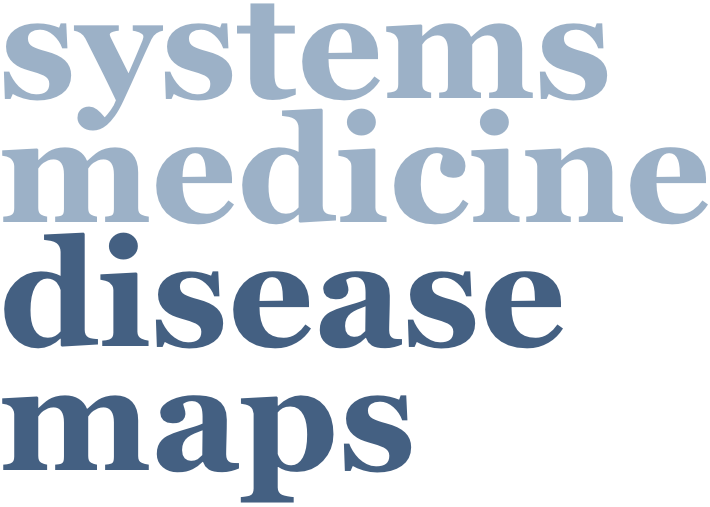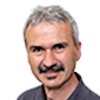
Parkinson’s disease
Parkinson’s Disease Map
Homepage: https://wwwfr.uni.lu/lcsb/research/parkinson_s_disease_map
Online access and exploration: https://pdmap.uni.lu
Development status: First version is complete and published
Disease IDs: DOID:14330, ICD10CM:G20, MESH:D010300, MONDO:0005180
Sustainable support: LCSB, MINERVA Platform
Construction tool: CellDesigner
Funding: LCSB Institutional Funds, L’Œuvre Nationale de Secours Grande-Duchesse Charlotte
How to cite: Fujita, et al. Mol Neurobiol. 2014. doi: 10.1007/s12035-013-8489-4. PMID: 23832570
Contact: Marek Ostaszewski, University of Luxembourg, marek.ostaszewski(at)uni.lu
Parkinson’s disease (PD) is the second most prevalent neurodegenerative disease in the world. Although many genetic and environmental factors contributing to the risk of PD have been identified, no unique causal mechanism is defined. Information on various aspects of PD pathogenesis is rapidly increasing and needs to be efficiently organized to make this knowledge available for researchers from academia, clinics and pharma industry.
With our partners at the Systems Biology Institute (SBI) in Tokyo, Japan, we have developed the Parkinson’s disease map (PD map) - the first manually curated and high-quality knowledge repository of molecular mechanisms contributing to the complex aetiology of PD. The map compiles information from more than 1000 research articles and public databases into a molecular interaction map.
The PD map displays molecular and biochemical pathways from human brain focused on dopaminergic neurons, including the direct cellular environment (astrocytes, microglia cells) as well as adjacent cellular structures such as blood-brain-barrier and postsynaptic terminals. It comprises cellular processes designated as hallmarks of PD pathogenesis, such as synaptic dysfunction, mitochondrial dysfunction, impaired protein degradation, neuropathobiology of aggregated proteins, or neuroinflammation.
The PD map can be easily explored via an intuitive “Google map” layout also on tablets and smartphones. It offers free access to diverse research-facilitating functionalities: relevant annotation and links to scientific databases, overlay of experimental data, or identification of drug targets and chemical interactions by dedicated interfaces.
Publications
Fujita KA, Ostaszewski M, Matsuoka Y, Ghosh S, Glaab E, Trefois C, Crespo I, Perumal TM, Jurkowski W, Antony PM, Diederich N, Buttini M, Kodama A, Satagopam VP, Eifes S, Del Sol A, Schneider R, Kitano H, Balling R. Integrating pathways of Parkinson’s disease in a molecular interaction map. Mol Neurobiol. 2014 Feb;49(1):88-102. doi: 10.1007/s12035-013-8489-4. Epub 2013 Jul 7. Review. PMID: 23832570.
Satagopam V, Gu W, Eifes S, Gawron P, Ostaszewski M, Gebel S, Barbosa-Silva A, Balling R, Schneider R. Integration and Visualization of Translational Medicine Data for Better Understanding of Human Diseases. Big Data. 2016 Jun;4(2):97-108. doi: 10.1089/big.2015.0057. PMID: 27441714.
Development Team
 |
Stephan Gebel, PhD University of Luxembourg, Luxembourg Researcher, Luxembourg Centre for Systems Biomedicine Project Manager, the Parkinson's disease map project |
 |
Piotr Gawron, PhD University of Luxembourg, Luxembourg Researcher, Luxembourg Centre for Systems Biomedicine |
 |
Marek Ostaszewski, PhD University of Luxembourg, Luxembourg Researcher, Luxembourg Centre for Systems Biomedicine |
 |
Rudi Balling, PhD University of Luxembourg, Luxembourg Director, Luxembourg Centre for Systems Biomedicine |
 |
Reinhard Schneider, PhD University of Luxembourg, Luxembourg Head of Bioinformatics Core, Luxembourg Centre for Systems Biomedicine |
Community curation (domain experts: clinicians, biologists)
We encourage the PD community to join forces and support this project by integrating their expertise to continuously refine and expand the knowledge within the PD map. To support that, feedback functions are integrated into the PD map and hands-on workshops with domain experts are regularly organized.
Events
- “Systematic curation of Parkinson's disease pathways” Satellite workshop at the XX World Congress on Parkinson’s disease and related disorders, 8th December 2013
- “Systematic curation of molecular pathways implicated in Parkinson’s disease” Satellite workshop on the 2nd International Parkinson’s disease Symposium, Munsbach, Luxembourg, 3rd October 2014
- “Application and curation of the Parkinson’s disease map”. Two satellite workshops at the Annual meeting of the GEoPD Consortium and the International Parkinson’s Disease Symposium, Belval, Luxembourg 5th and 8th October 2016
Funding
- Luxembourg Centre for Systems Biomedicine (LCSB): Institutional Funds
- Donation from L’Œuvre Nationale de Secours Grande-Duchesse Charlotte